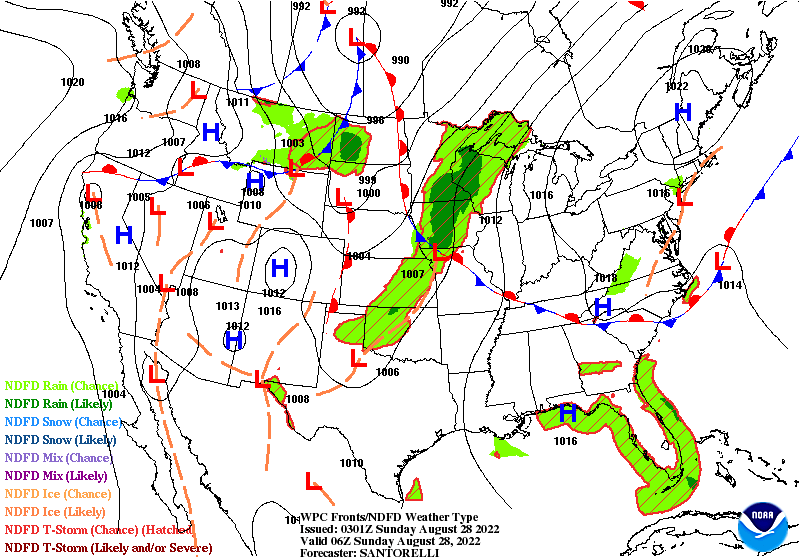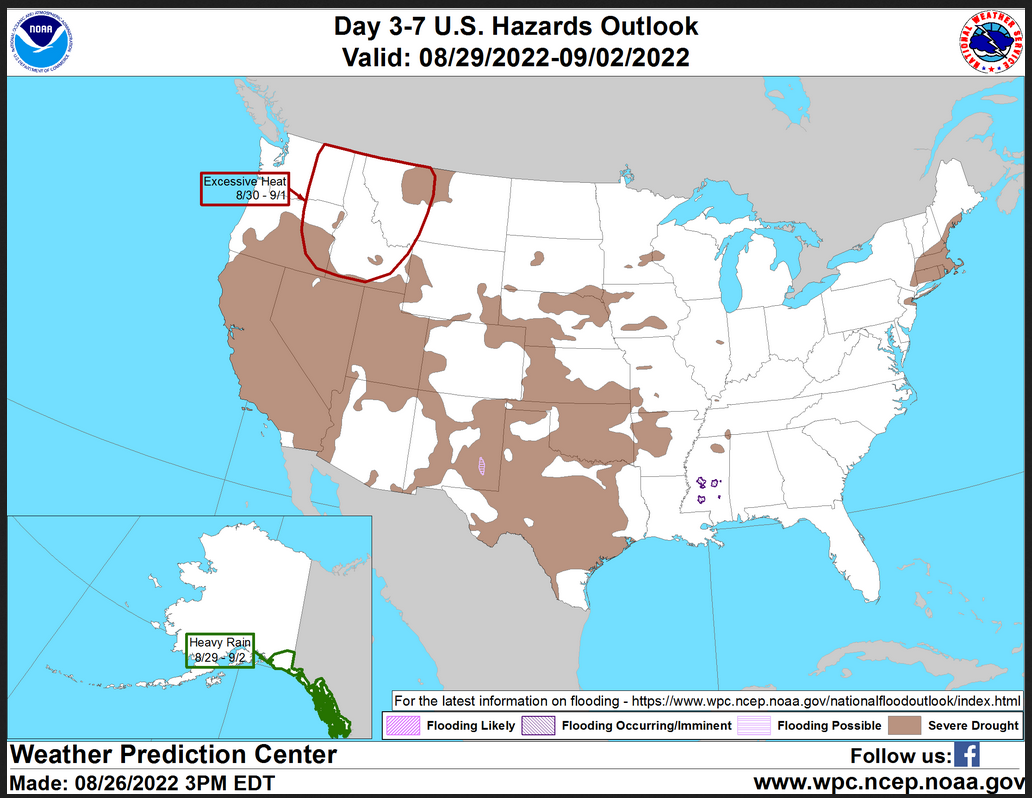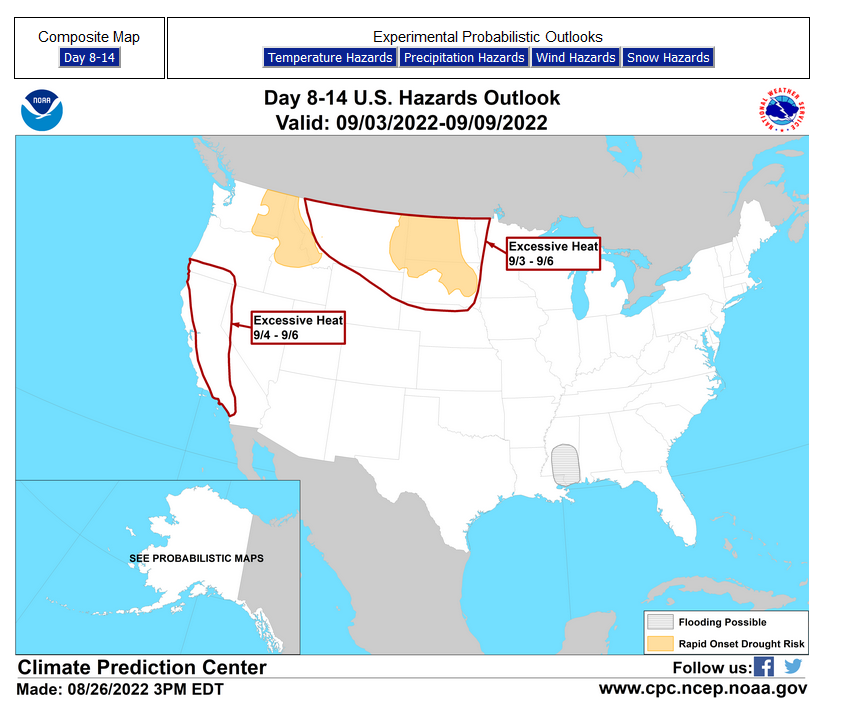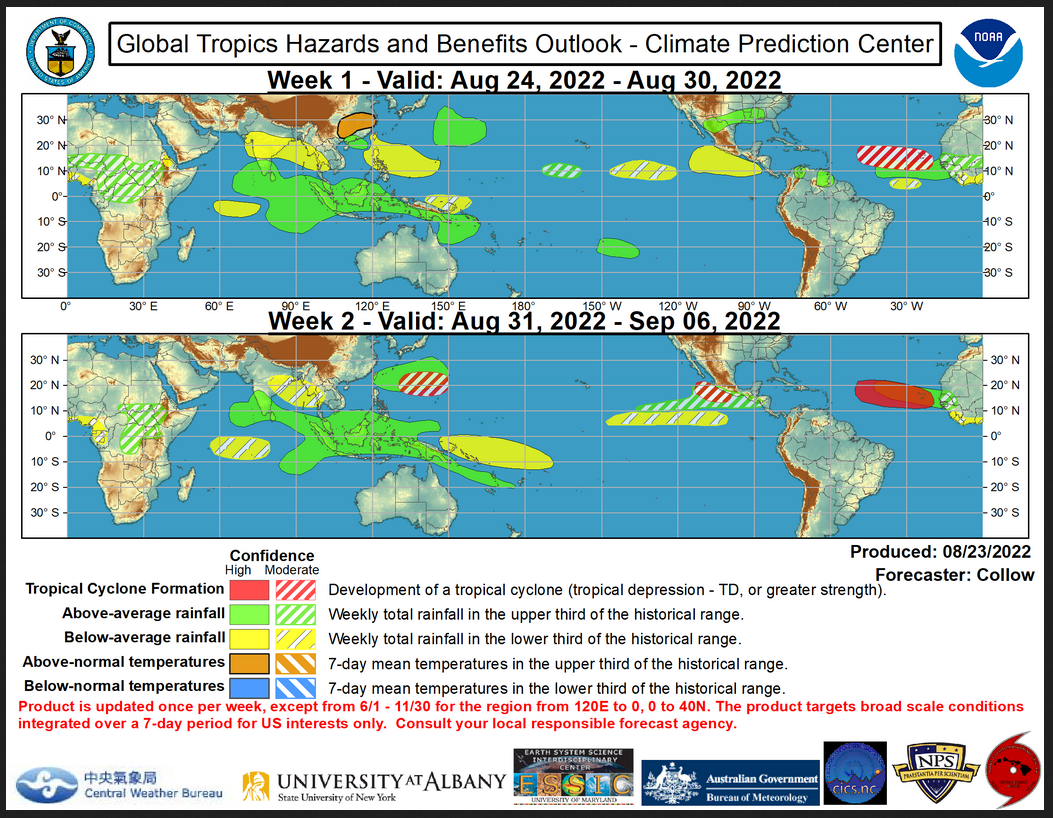Here is what we are paying attention to tonight and the next 48 hours from this evening’s NWS Forecast.
...Slight risks of excessive rainfall and severe thunderstorms are in effect for parts of the Upper Midwest tonight... ...Localized heavy to excessive rainfall possible across parts of the Southeast/Gulf Coast and the Southwest... ...Warming trend begins for Northwest and Northeast...
Continuation of the NWS Short Range Forecast (It is updated twice a day and these updates can be found here.
A low pressure system moving across the mid-section of the country will be the focus for heavy rain and thunderstorms across the Midwest and Mississippi Valley over the next couple of days. Showers and thunderstorms are expected to continue across the Central/Southern Plains into the Mid-to-Upper Mississippi Valley tonight as moist unstable air streams north and interacts with a warm front. Localized flash flooding and severe thunderstorms capable of producing hail and damaging winds are possible over parts of Iowa and southern Minnesota/Wisconsin due to heightened instability and moisture focusing around the aforementioned warm front. Troughing over Florida and diurnal heating will lead to afternoon convection and the threat of heavy rainfall, particularly across west-central portions of the state tonight through Monday. Severe thunderstorms are also possible across portions of north/central Minnesota into northwestern Wisconsin on Sunday where a Slight Risk is in effect. Scattered thunderstorms with the threat of an isolated heavy rainfall event will also be present over the Upper Midwest on Sunday before spreading into the Ohio/Tennessee Valleys on Monday. Diurnal heating will present the Southwest with the chance for scattered to isolated thunderstorms over the next couple of days and a very localized flash flooding threat tonight. A warming trend will ensue in the Northeast over the next few days with highs in the 80s to low 90s across the on Monday and Tuesday before a cold front pushes through and moderates temperatures mid-to-late next week. Upper level ridging and the influence of amplified troughing in the east Pacific will begin warming temperatures in the Pacific Northwest on Monday with highs likely to climb into the 90s and upward heading into midweek.
Maps that relate the forecast to geography can be found by clicking Here for Day 1 and Here for Day 2.
Here is a 60-hour animated forecast map that shows how the short-term forecast is expected to play out.
If it needs to be updated click here.
HAZARDS OUTLOOKS
Click here for the latest complete Day 3 -7 Hazards forecast which updates only on weekdays. Once a week probably Monday or Tuesday I will update the images. I provided the link for readers to get daily updates on weekdays. Use your own judgment to decide if you need to update these images.
Worldwide Tropical Forecast
(This graphic updates on Tuesdays) If it has not been updated, you can get the update by clicking here
Detailed Maps and Reports for the Western Atlantic and the Pacific Oceans
Below are three maps that summarize the situation for the Atlantic, Eastern and Central Pacific. Additional information can be accessed by clicking HERE
First the Atlantic
Click to view the forecast map and have access to additional information https://www.nhc.noaa.gov/gtwo.php?basin=atlc&fdays=5
Then Eastern Pacific
Click to view the forecast map and have access to additional information https://www.nhc.noaa.gov/gtwo.php?basin=epac&fdays=5
Then Central Pacific
Click to view the forecast map and have access to additional information https://www.nhc.noaa.gov/gtwo.php?basin=cpac&fdays=5
And the Western Pacific
Click to view the forecast map and have access to additional information https://www.metoc.navy.mil/jtwc/jtwc.html
Some Intermediate-Term Outlooks
Links to “Outlook” maps and discussions for three time periods. Days 6 – 10, Days 8 – 14, and Weeks 3 and 4. An outlook differs from a forecast based on how NOAA uses these terms in that an “outlook” presents information from deviation from normal and the likelihood of these deviations.
You have to click on the links because they do not update automatically and I do not want to have stale images in the article. But it is not difficult to click on a link and you get a large image plus a discussion. On Fridays in a separate article, we will show the images and provide a link in this article that article. But remember what you will see is the images as of Friday. But here you can get the current images simply by clicking on them. Then hit the return arrow at the upper left of your screen to return to the article. You will not find this information easily anywhere else.
Right now you can find these maps here (We show them every Friday there but you can click above and find them).
World Forecast for Day 6 (Currently Set for Day 6 but the reader can change that)
World Weather Forecast produced by the Australian Bureau of Meteorology. Unfortunately, I do not know how to extract the control panel and embed it into my report so that you could use the tool within my report. But if you visit it Click H ere and you will be able to use the tool to view temperature or many other things for THE WORLD. It can forecast out for a week. Pretty cool. Return to this report by using the “Back Arrow” usually found top left corner of your screen to the left of the URL Box. It may require hitting it a few times depending on how deep you are into the BOM tool. Below are the current worldwide precipitation and air pressure forecasts for six days out. They will not auto-update and right now are current for Day 6. If you want the forecast for a different day Click Here I will try to update this map each day but you have the link so you can access the dashboard and get a wide variety of forecasts.I mostly rely on the reader to interpret world maps. For this map, areas of expected precipitation for the date and time shown are clearly shown.
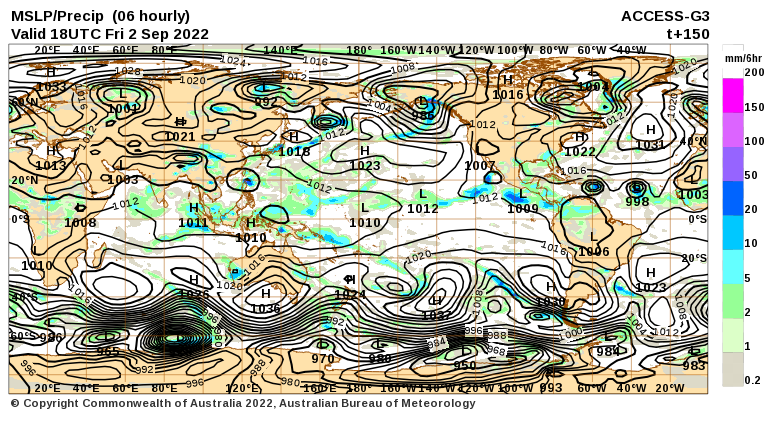 The number of High-Pressure systems shown is called the Wave Number. Maybe I will discuss WN someday. But it shows how many Rossby Waves there are around the World. Sometimes they are hard to count. Counting Low-Pressure systems should provide the same WN. Rossby Waves are the way the temperature distribution of the Planet remains in balance. It is basically the science of fluid dynamics. It can be very helpful in predicting the movement of weather patterns. You can snip an area of interest and move it into MS Paint and enlarge it.
The number of High-Pressure systems shown is called the Wave Number. Maybe I will discuss WN someday. But it shows how many Rossby Waves there are around the World. Sometimes they are hard to count. Counting Low-Pressure systems should provide the same WN. Rossby Waves are the way the temperature distribution of the Planet remains in balance. It is basically the science of fluid dynamics. It can be very helpful in predicting the movement of weather patterns. You can snip an area of interest and move it into MS Paint and enlarge it.
Month to Date Information
Month to date Temperature can be found at https://hprcc.unl.edu/products/maps/acis/MonthTDeptUS.png
Month to date Precipitation can be found at https://hprcc.unl.edu/products/maps/acis/MonthPNormUS.png

